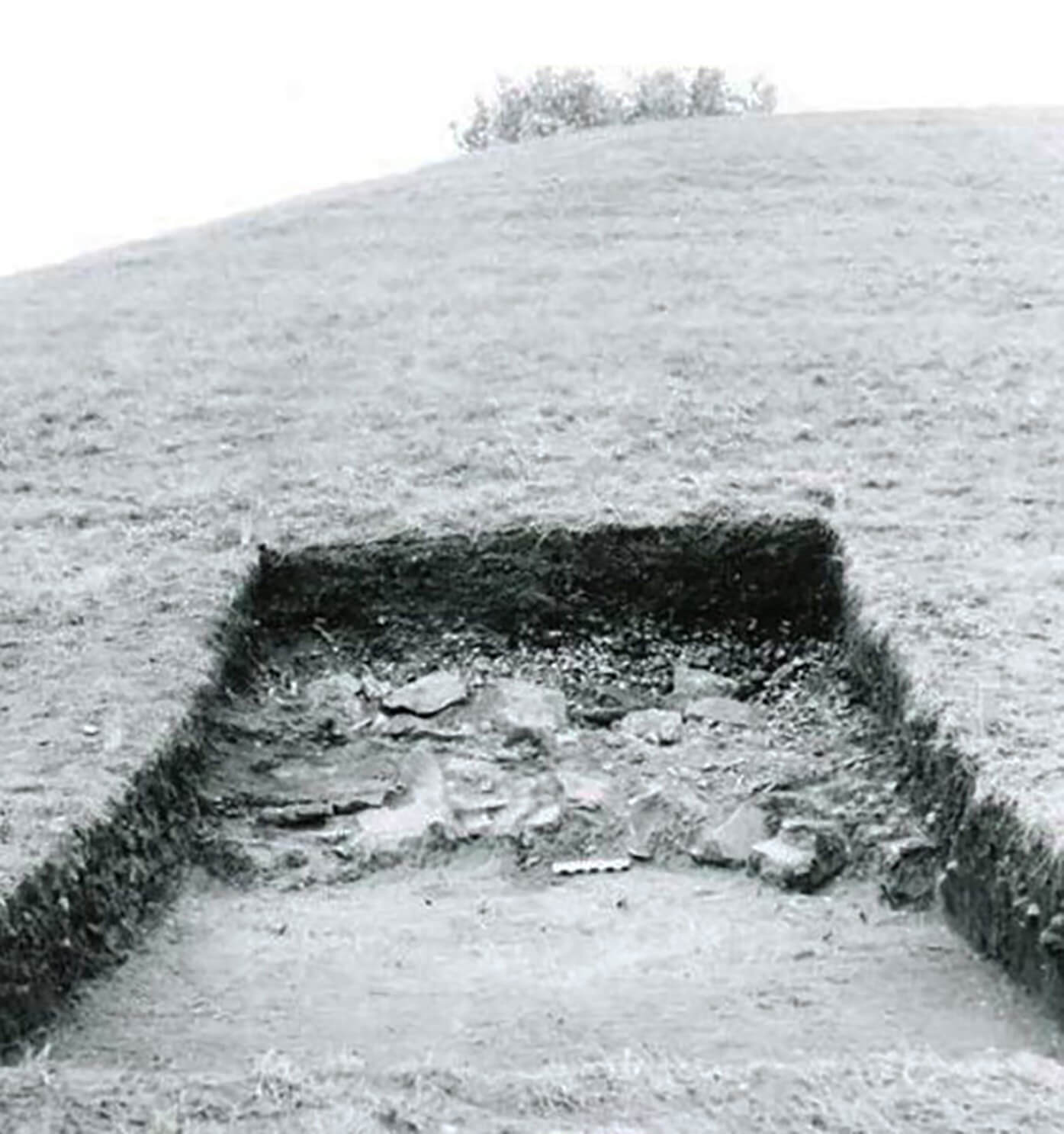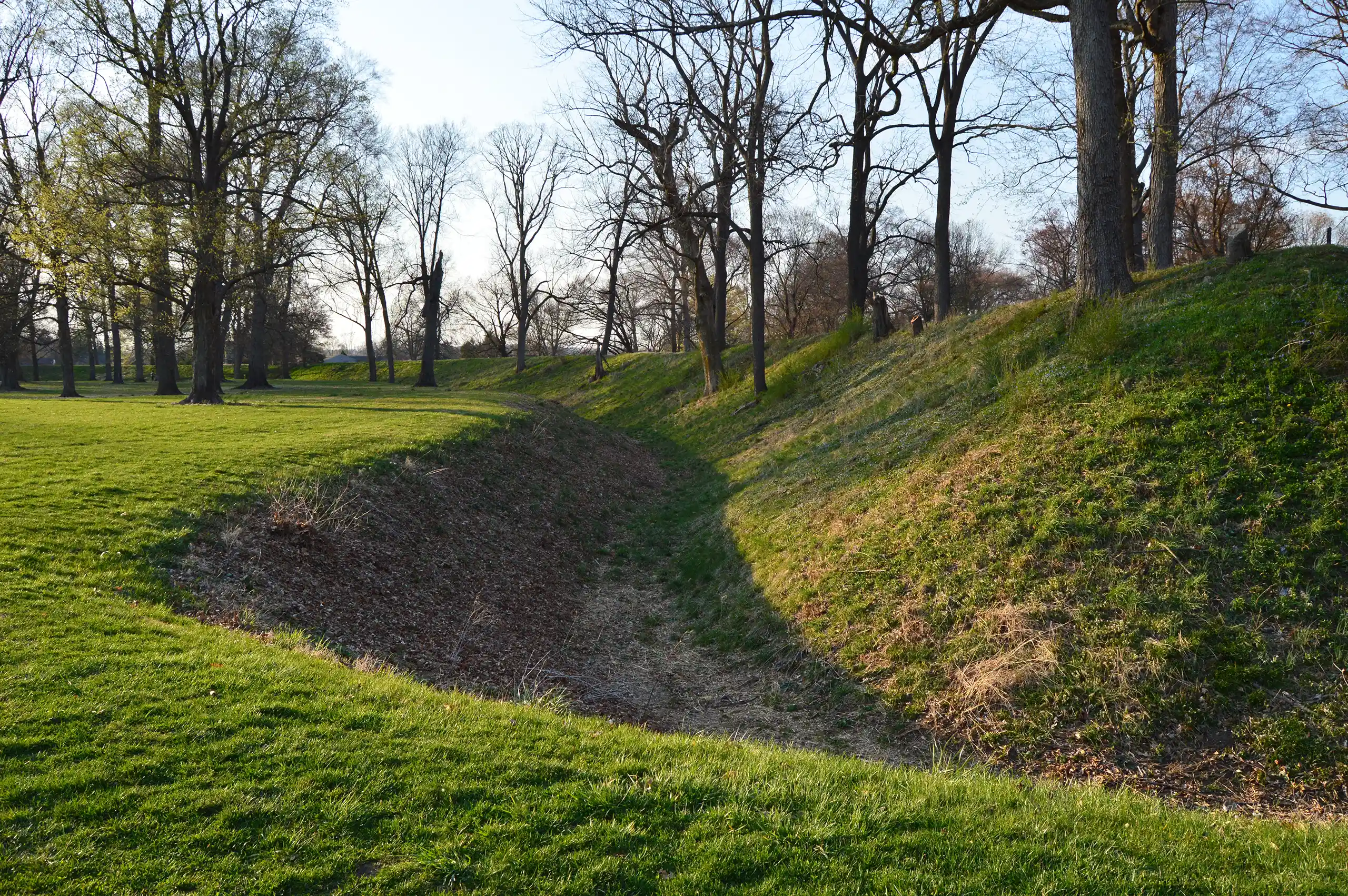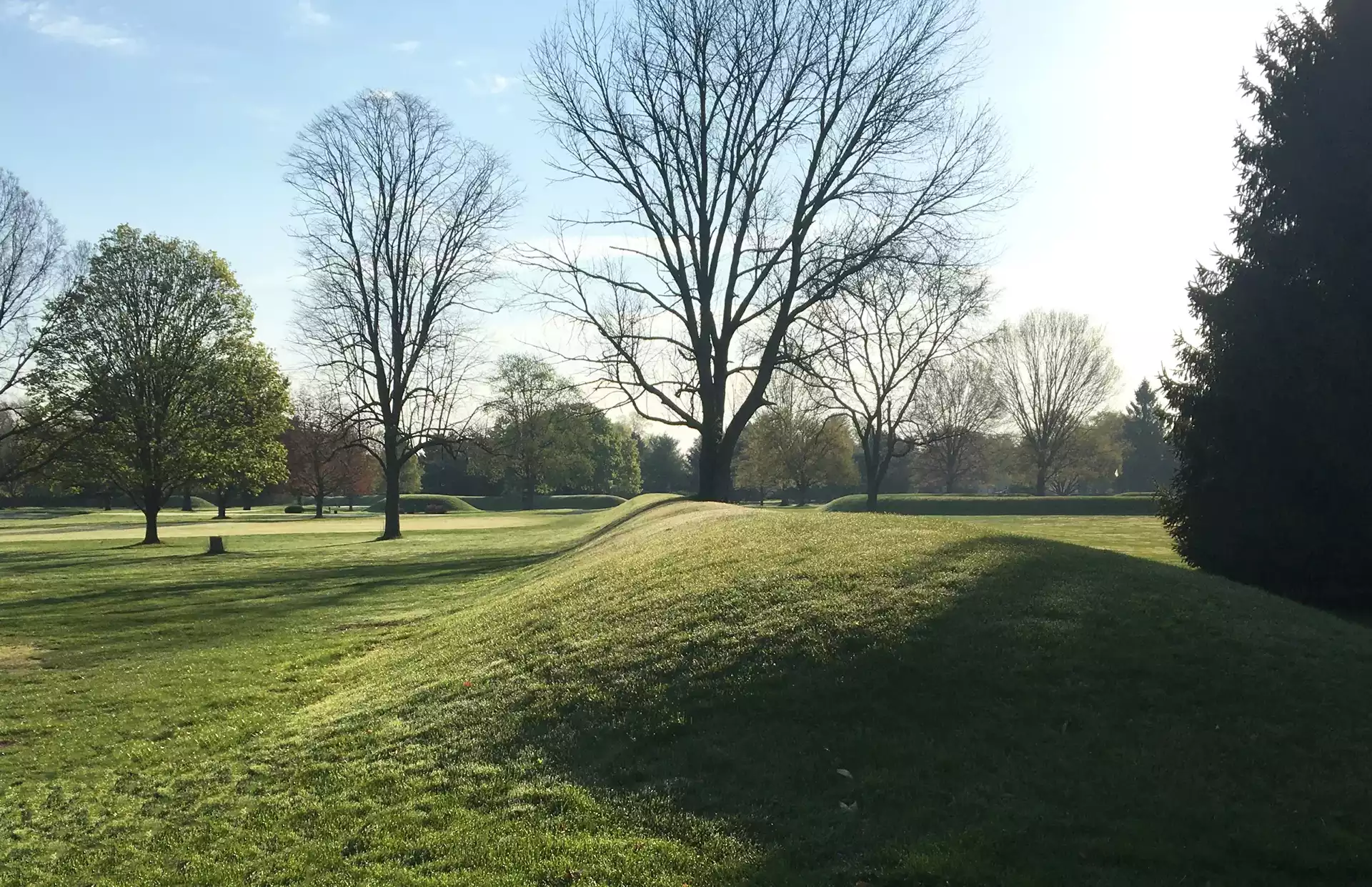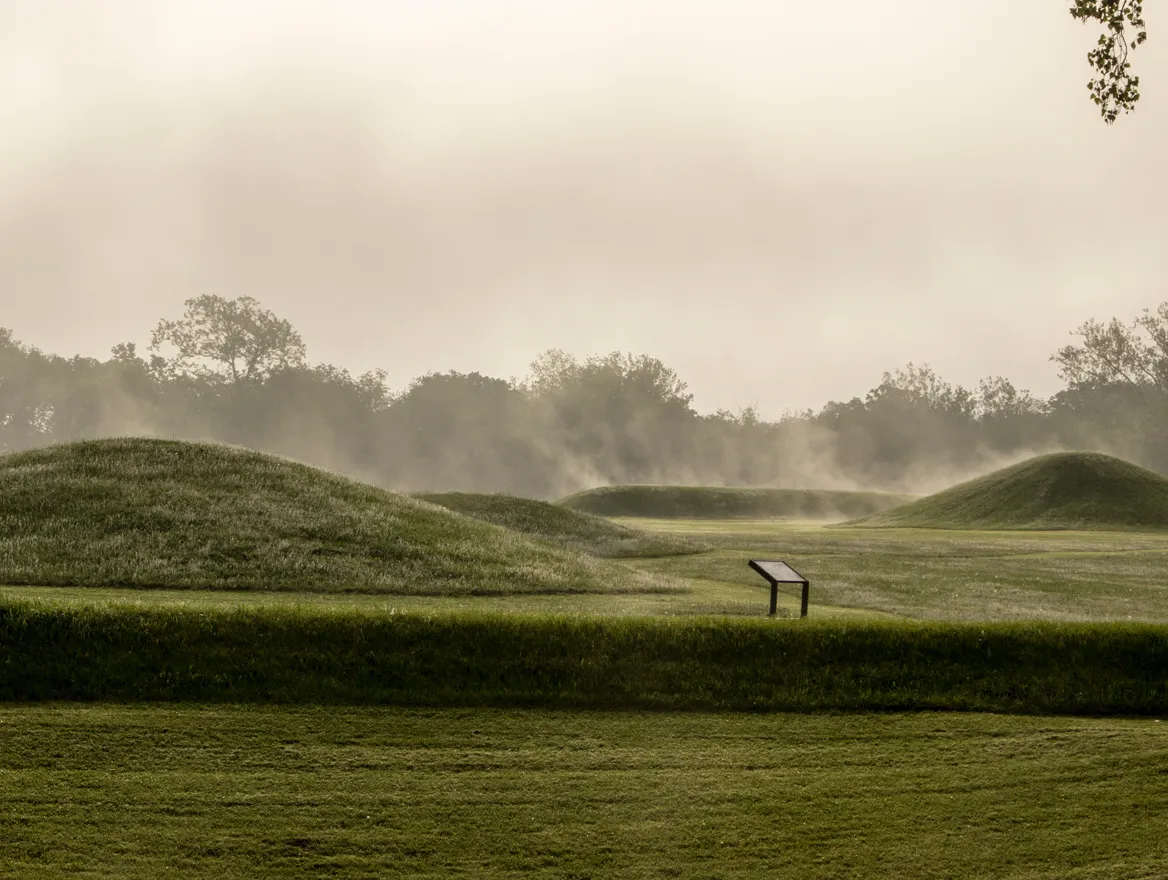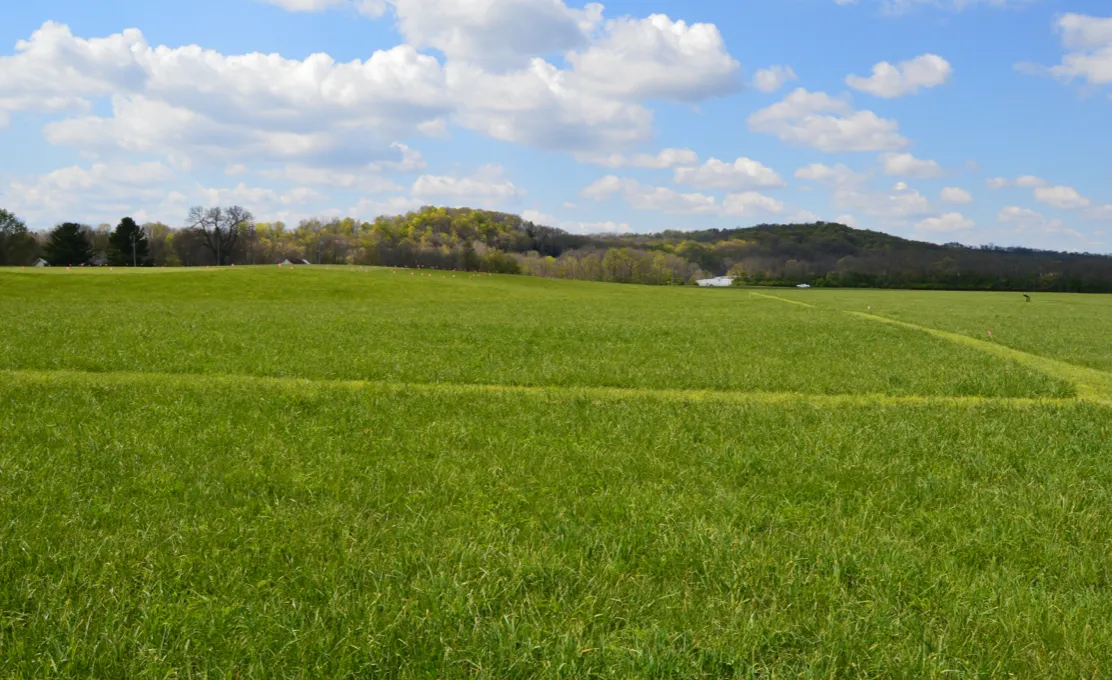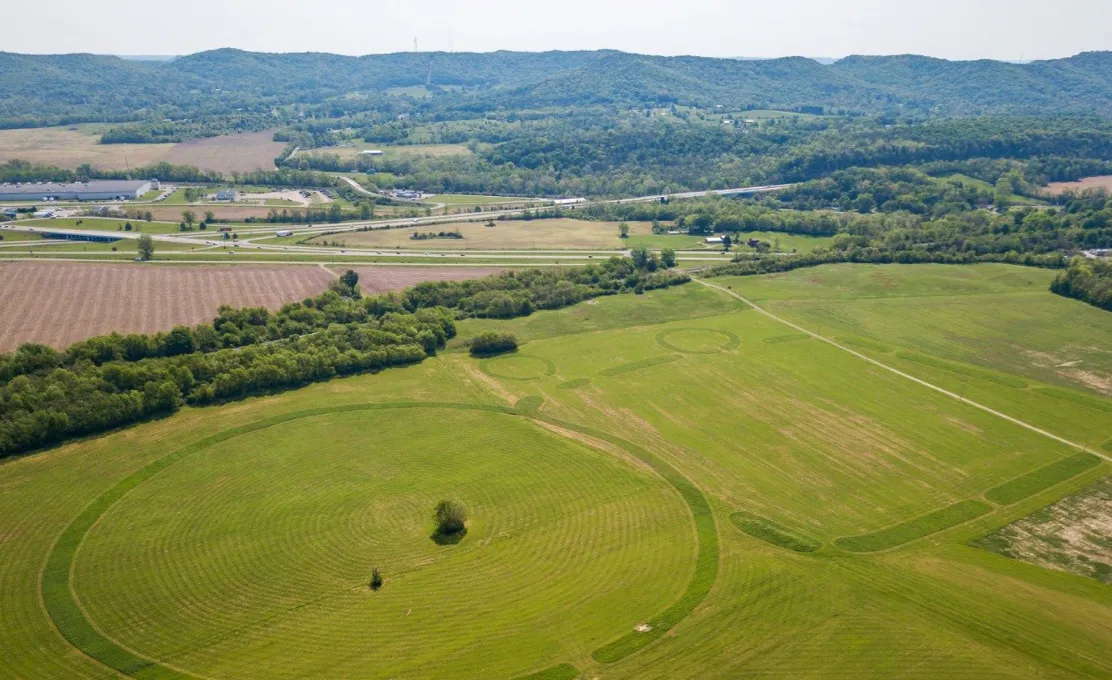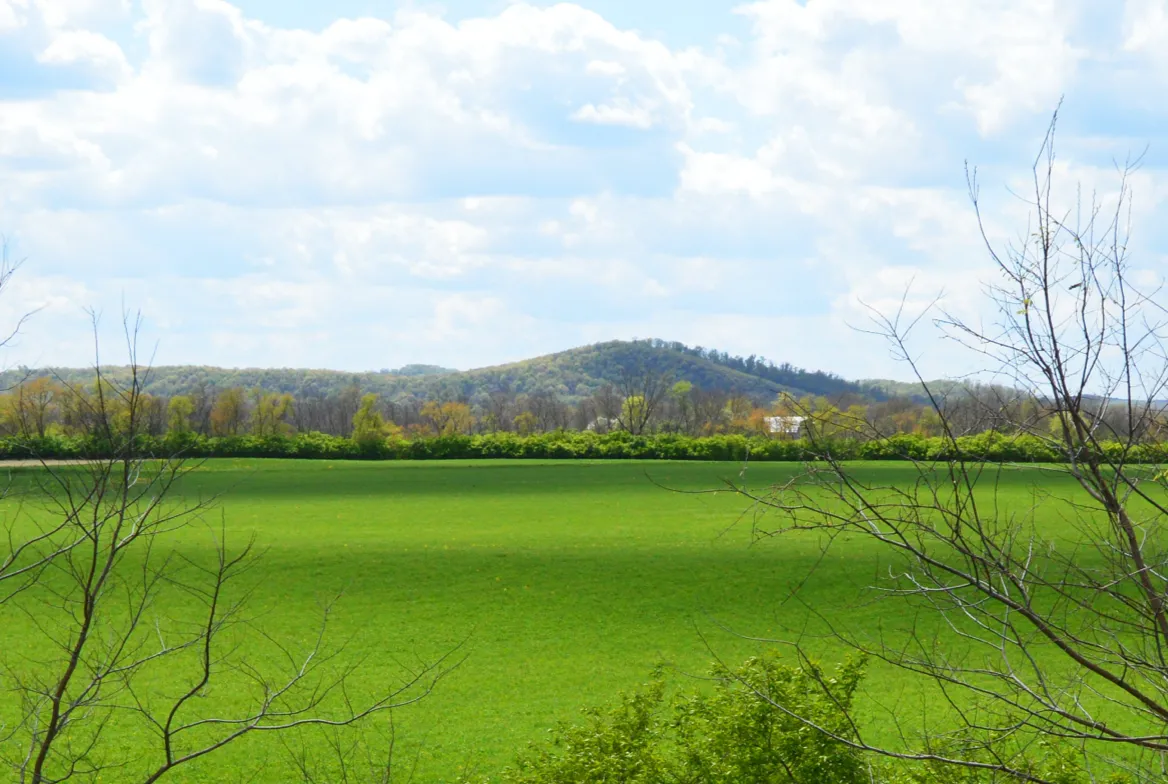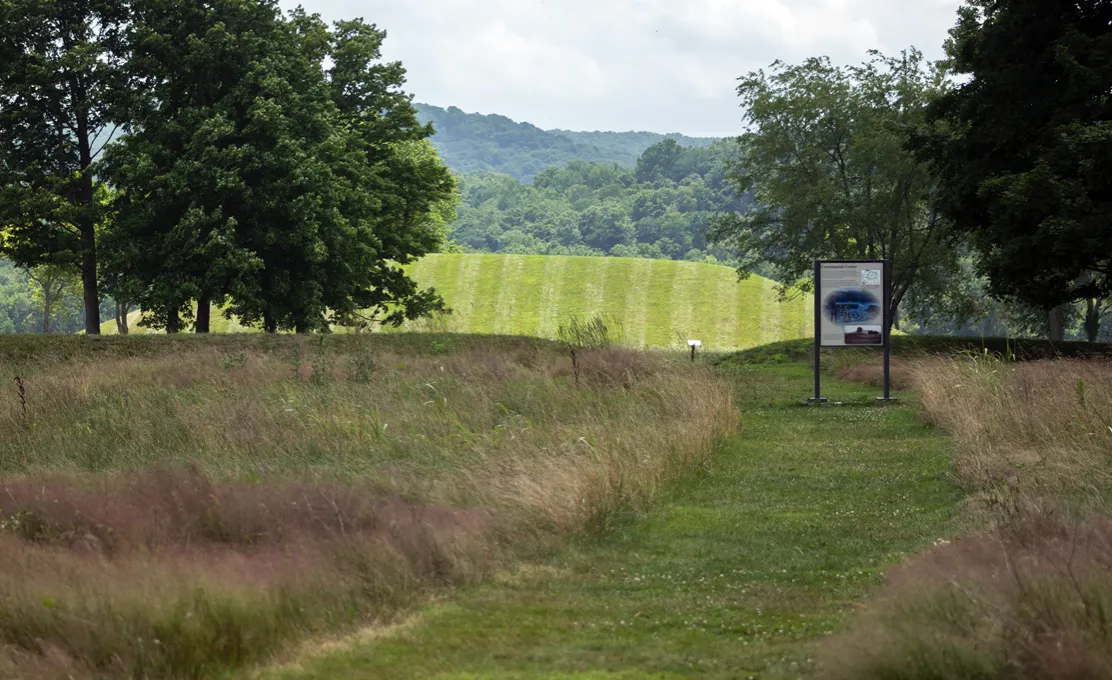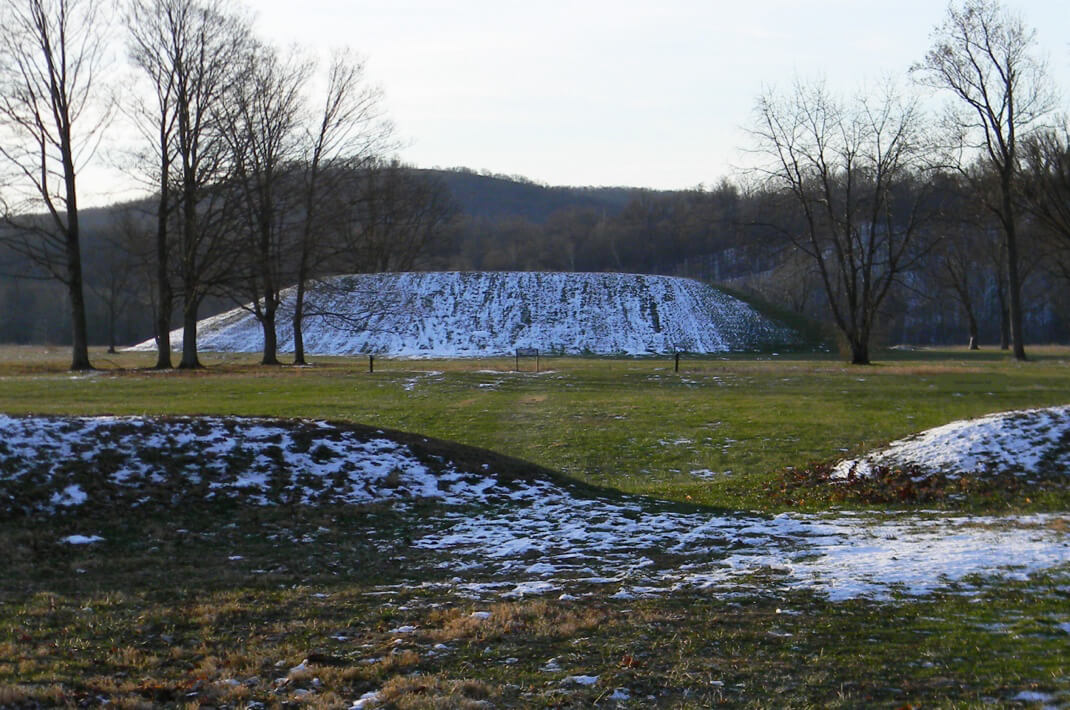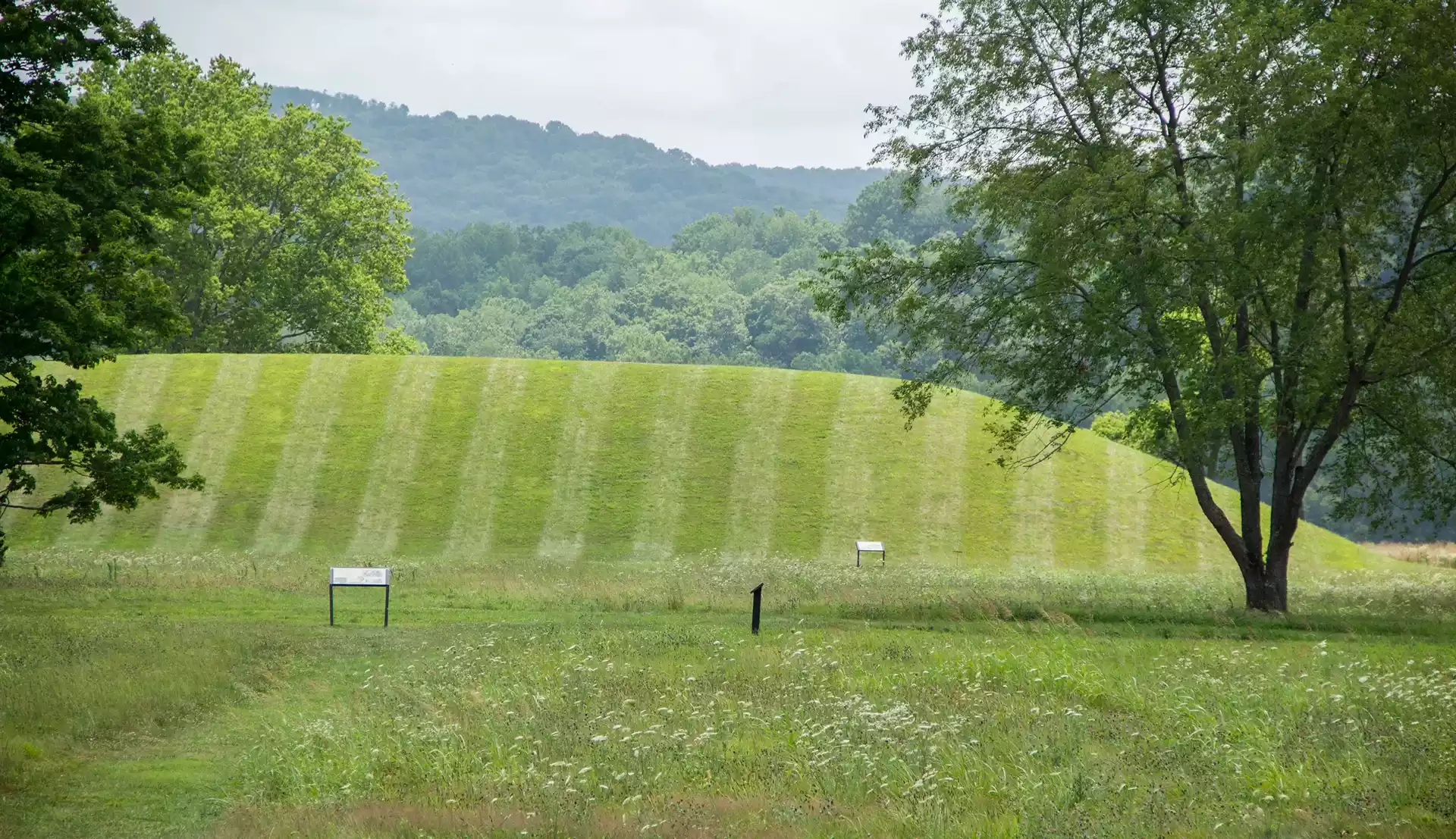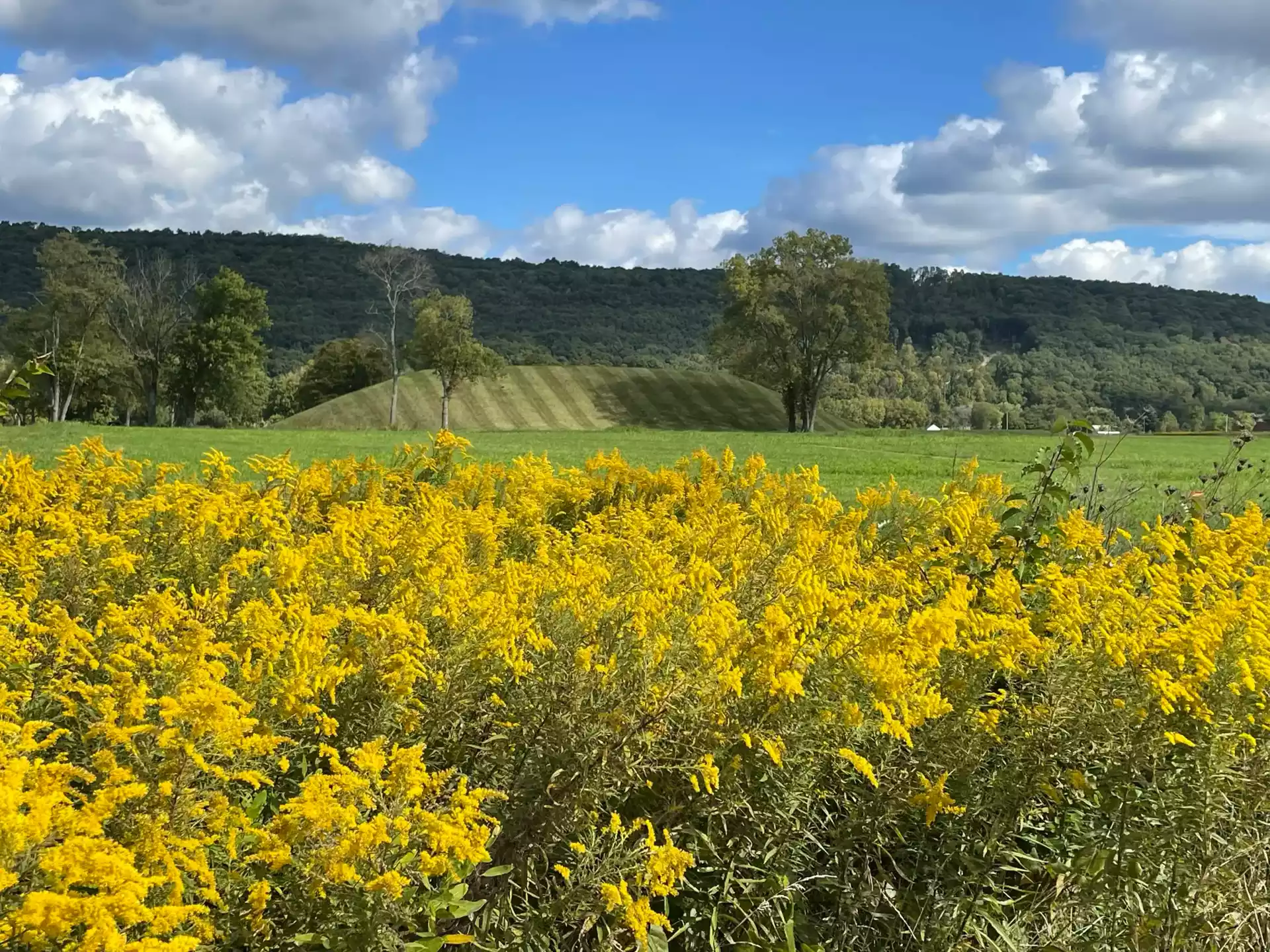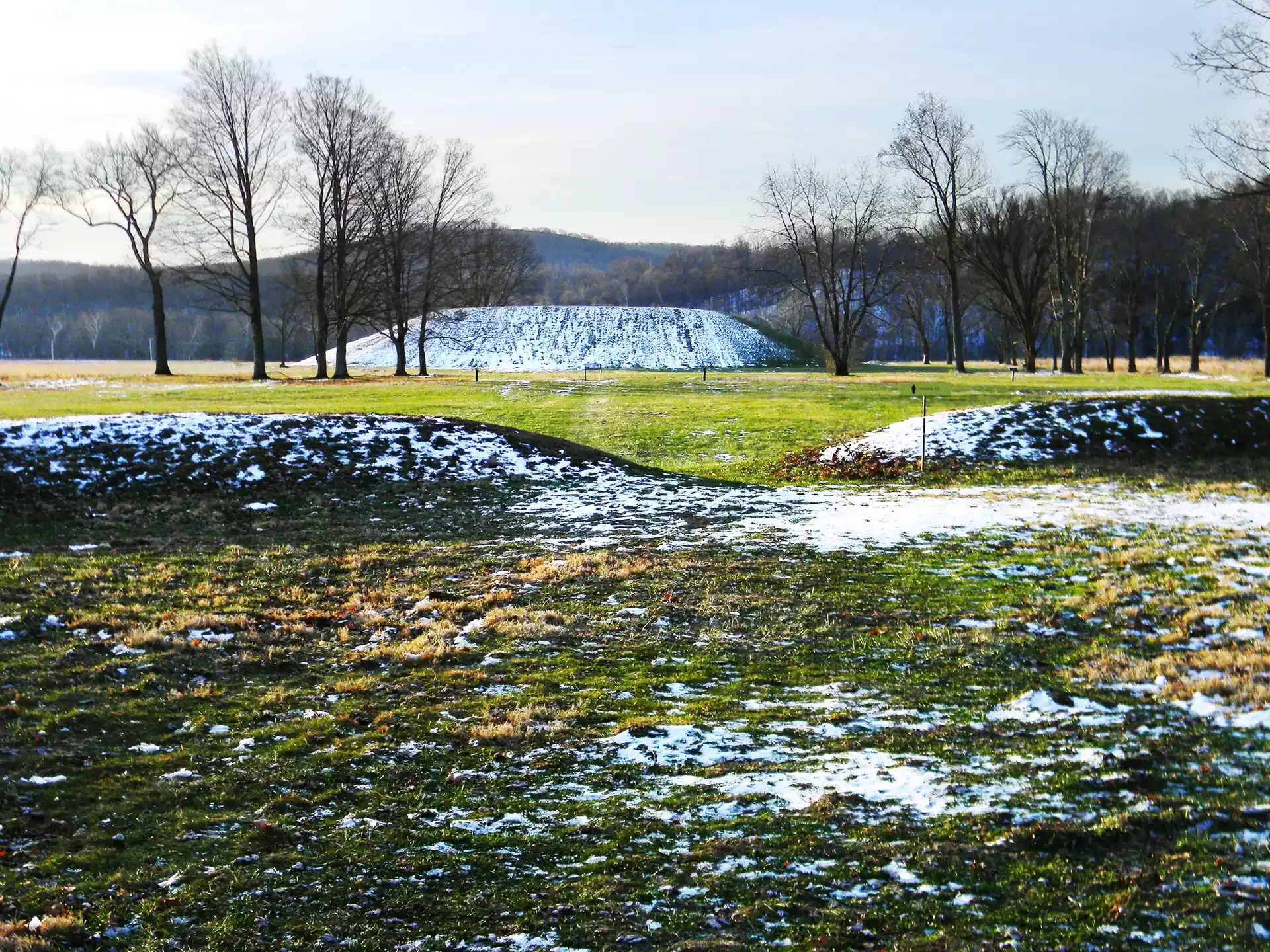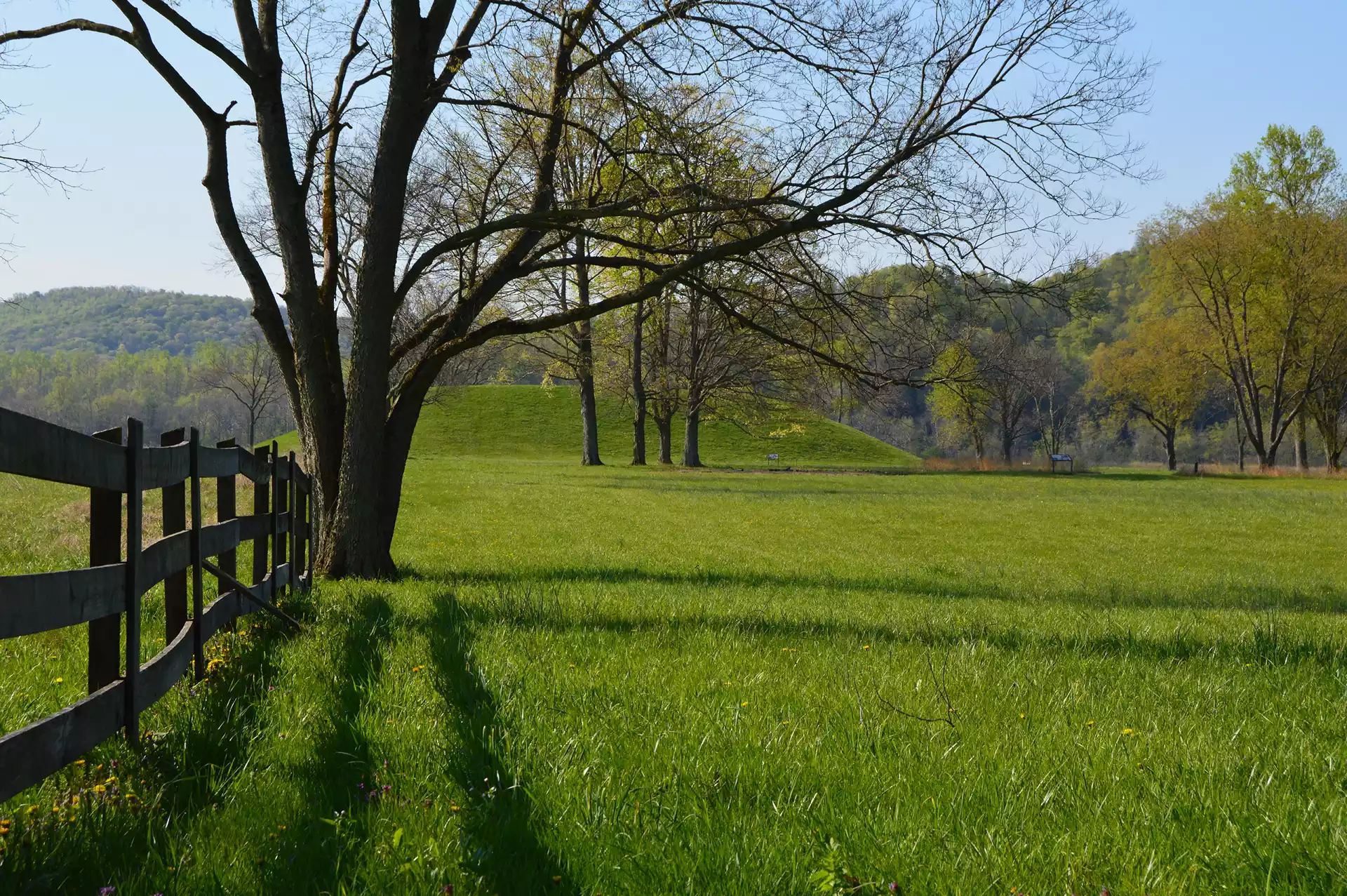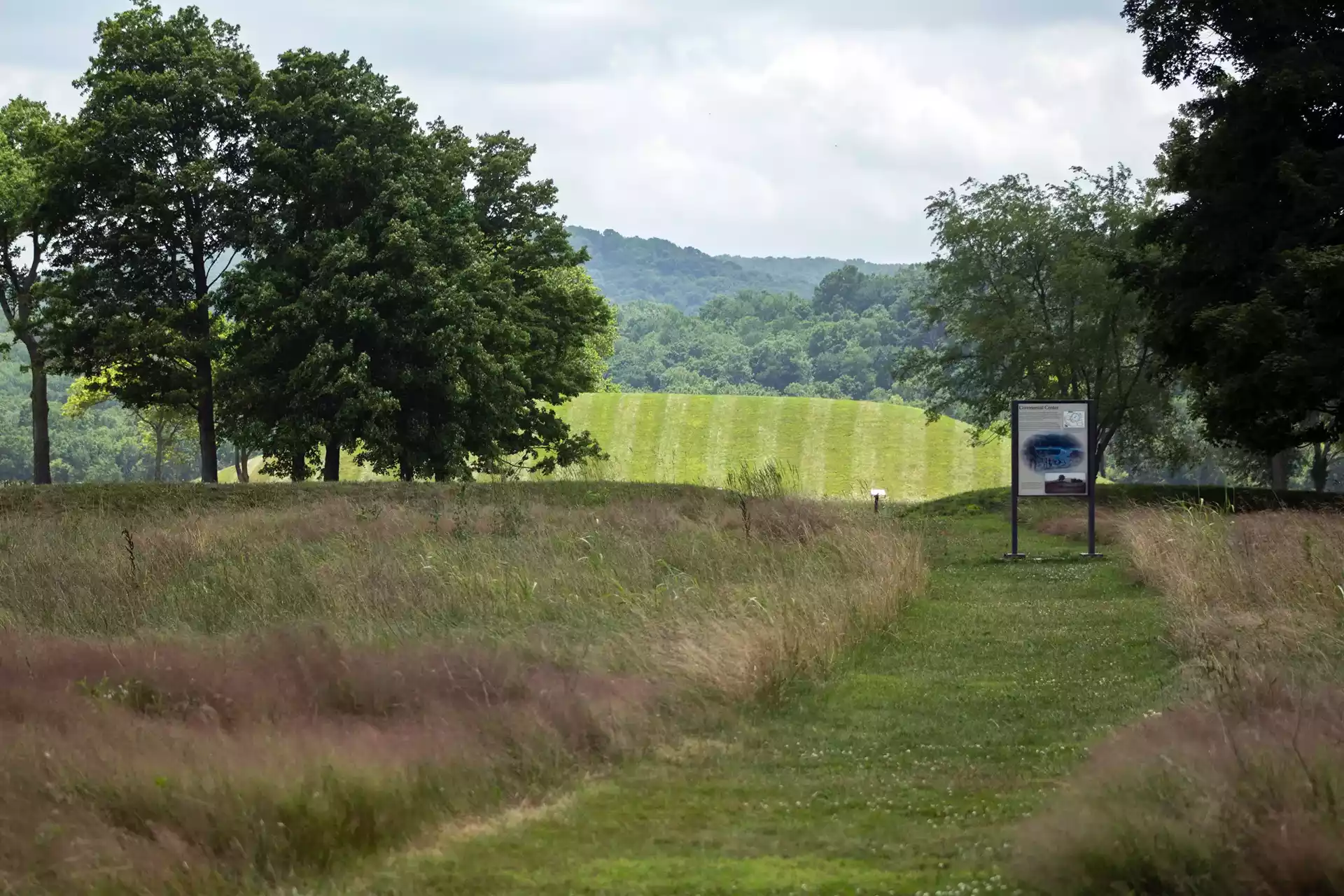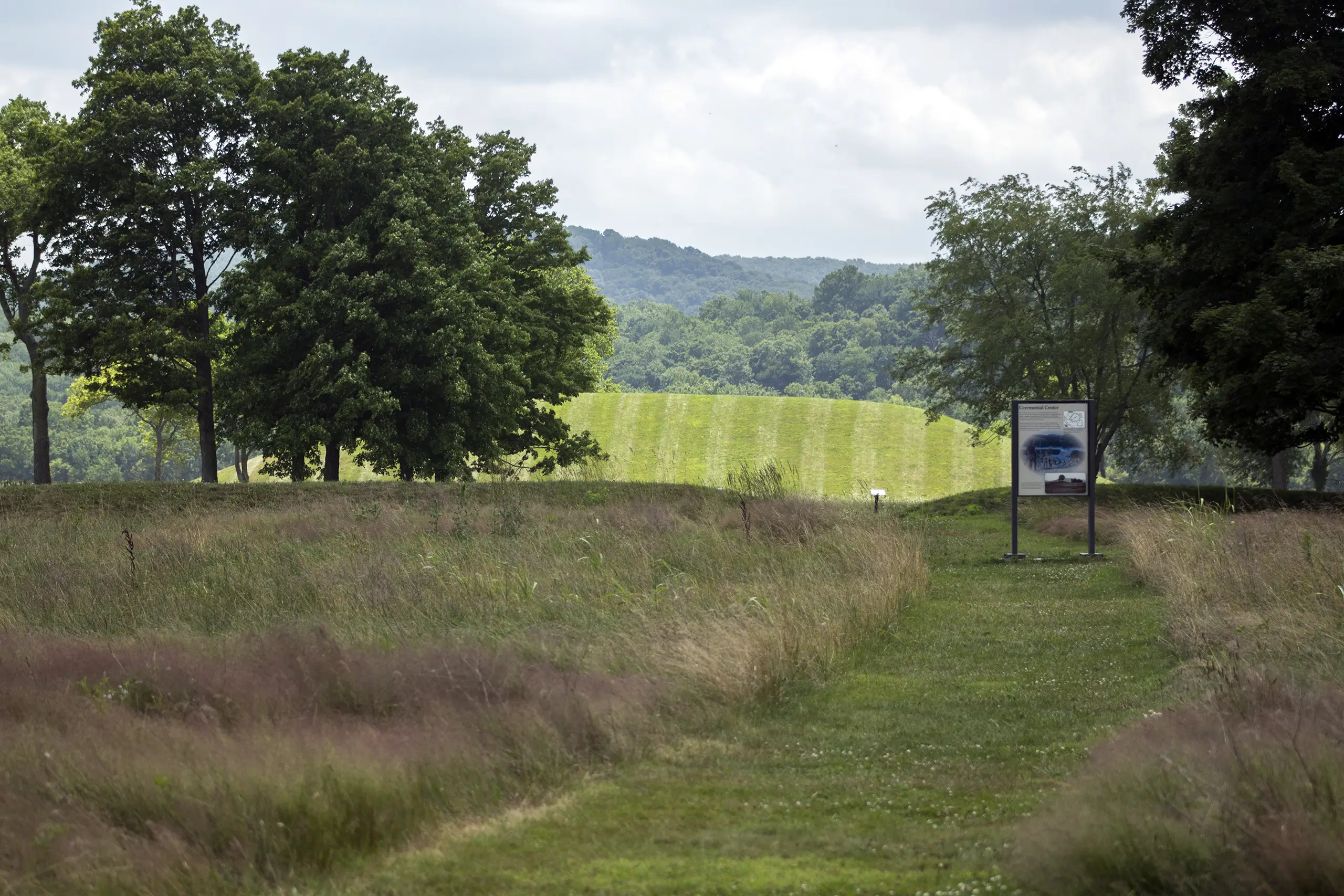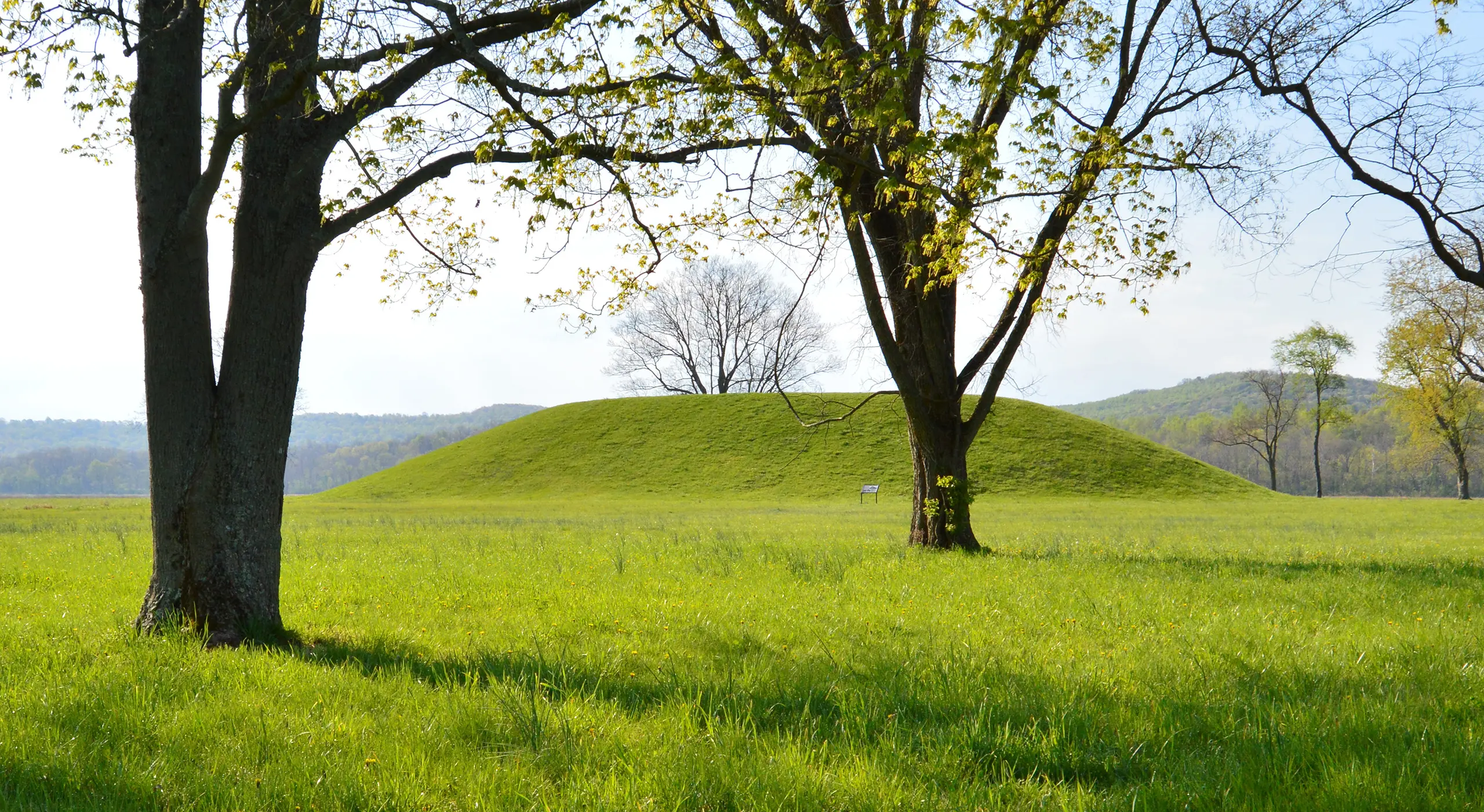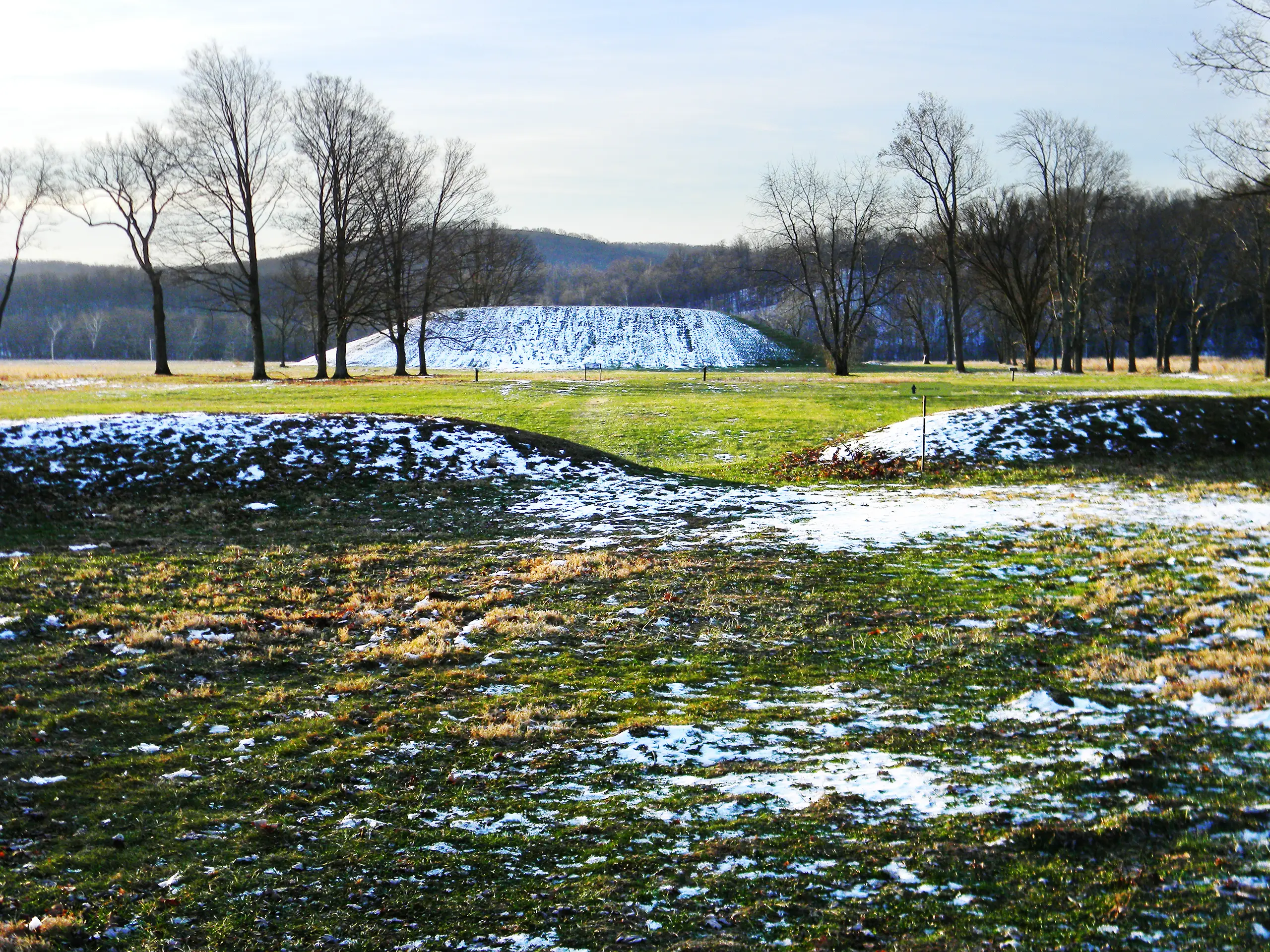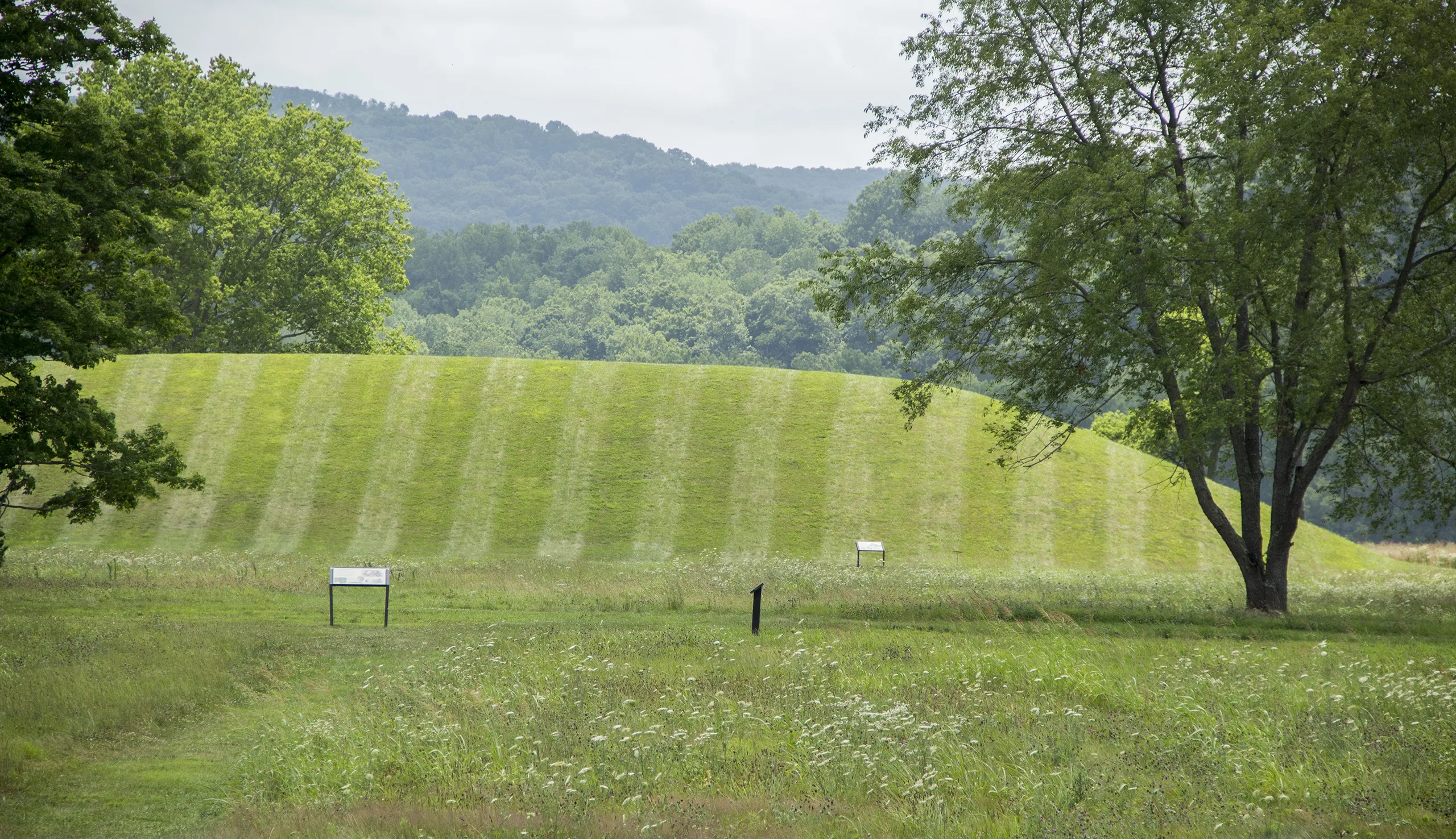Seip Earthworks
Chillicothe, OH
Like the other Hopewell earthworks, the Seip Earthworks were built by a dispersed group of American Indians for a ceremonial purpose. The three shapes that make up the Seip Earthworks—two enormous circles and a square—were likely large gathering places of great significance, as is evidenced by their divine geometry and archaeological contributions.
Visitor Info
7058 US 50 East
Bainbridge, OH 45612
- Park grounds: Open dawn until dusk
Coordinates:
39.2416867 °N
83.2214086 °W
What you'll see
Most of the earthen walls that made up the three immense shapes of the Seip Earthworks are no longer visible. Rather, their historical existence was confirmed using scientific archaeological tools. The Central Mound, an enormous reconstructed mound in the center of the Great Circle, was the third largest Hopewell burial mound at 240 feet by 160 feet. The remnants of the rest of the complex can be difficult to appreciate without a guide.
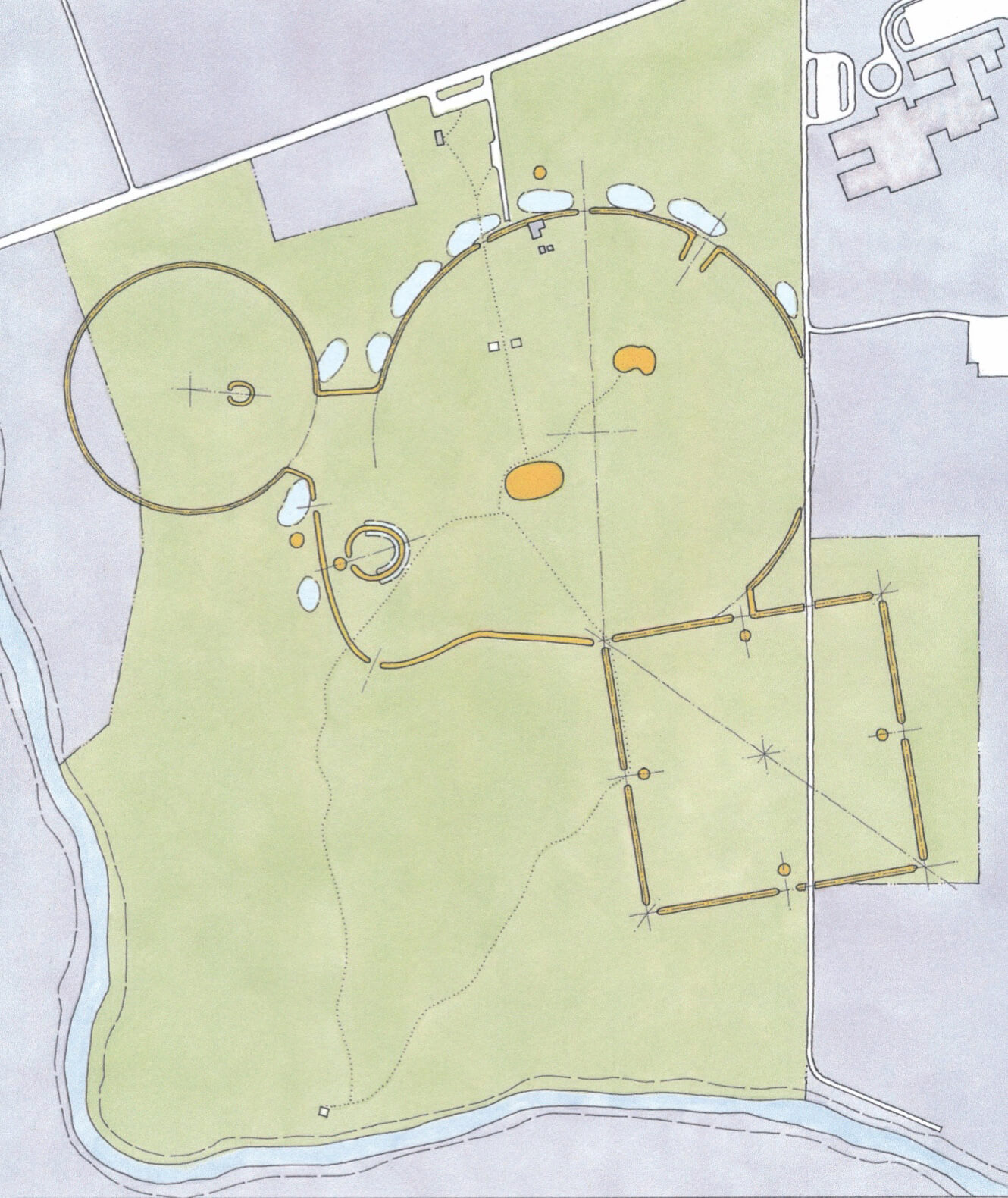
Archaeology & Artifacts
In addition to evidence of elaborate tombs and timber structure at Central Mound, archaeological investigations have revealed activities not related to burial, including large intentional burials of copper plates, celts, and earspools; outsized obsidian blades; and many materials in the form of animal effigies. Interestingly, a set of five “Great Pipes” made in a style and material from the Tennessee River Valley were found, suggesting a connection with people nearly 300 miles away. Seip has not been as methodically explored as some of the other Hopewell earthworks, and will undoubtedly teach us more about the Hopewell culture in the future.
